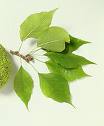Osage orange Tree Information
Images of Osage orange:






Osage orange grows in the following 39 states and provinces:
Alabama, Arkansas, California, Colorado, Connecticut, Delaware, Florida, Georgia, Illinois, Indiana, Iowa, Kansas, Kentucky, Louisiana, Maine, Maryland, Massachusetts, Michigan, Mississippi, Missouri, Nebraska, New Hampshire, New Jersey, New York, North Carolina, Ohio, Oklahoma, Oregon, Pennsylvania, Rhode Island, South Carolina, South Dakota, Tennessee, Texas, Utah, Vermont, Virginia, Washington, West VirginiaInformation about Osage orange:
The Maclura Pomifera is commonly known as the Bois D'arc, Hedge-apple as well as Osage-orange.
The currently accepted scientific name for osage-orange is Maclura pomifera (Raf.) Schneid. (Moraceae) . There are no currently accepted infrataxa.Osage-orange is native to a narrow belt in eastern Texas, southeastern Oklahoma, southwestern Arkansas, and the extreme northwest corner of Louisiana. This belt includes portions of the Blackland Prairies, Chiso Mountains, and the Red River drainage . Osage-orange has been introduced into most of the conterminous United States and has become naturalized throughout much of the eastern United States and the central Great Plains .Native and naturalized populations of osage-orange occur in rich bottomland forests and on sandy terraces. On the Trinity River floodplain in Texas, mostly small (less than 8-inch diameter) osage-orange occurs in bottomland forests dominated by cedar elm (Ulmus crassifolia), sugarberry (Celtis laevigata), green ash (Fraxinus pennsylvanica), and western soapberry (Sapindus soponaria var. drummondii) . In Iowa, osage-orange occurs in a honey-locust (Gleditsia triacanthos)-black locust (Robinia psuedoacacia)-boxelder (Acer negundo)-elm (Ulmus spp.) forest . On lower terraces of Salt Creek in Illinois, osage-orange occurs in a bur oak (Quercus macrocarpa)-hackberrry (Celtis occidentalis) forest . Osage-orange is also associated with white oak (Quercus alba), white ash (Fraxinus americana), and red mulberry (Morus rubra) . In Tennessee, Kentucky, and Alabama, osage-orange occurs with eastern redcedar (Juniperus virginiana), black walnut (Juglans nigra), hickory (Carya spp.), and elm . Osage-orange that has escaped cultivation often occurs as thickets along fencerows and ditches, in ravines, and in overgrazed pastures. It commonly occurs with honey-locust in disturbed areas .Some of the information provided here is attributed to:Carey, Jennifer H. 1994. Maclura pomifera. In: Fire Effects Information System, [Online]. U.S. Department of Agriculture, Forest Service, Rocky Mountain Research Station, Fire Sciences Laboratory (Producer). , available at the USDA Fire Effects Information System (FEIS) website